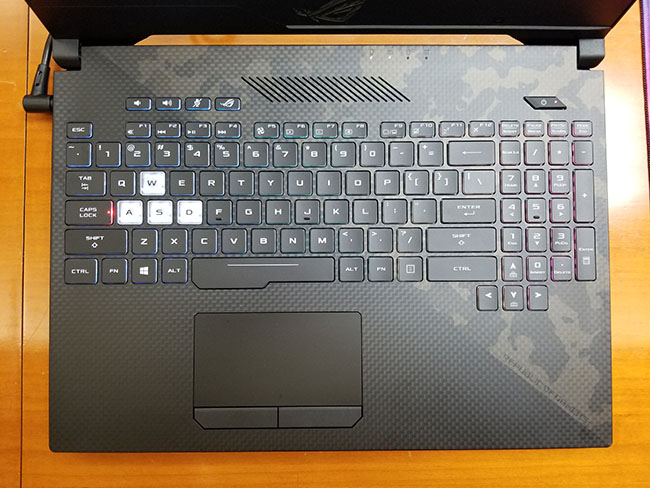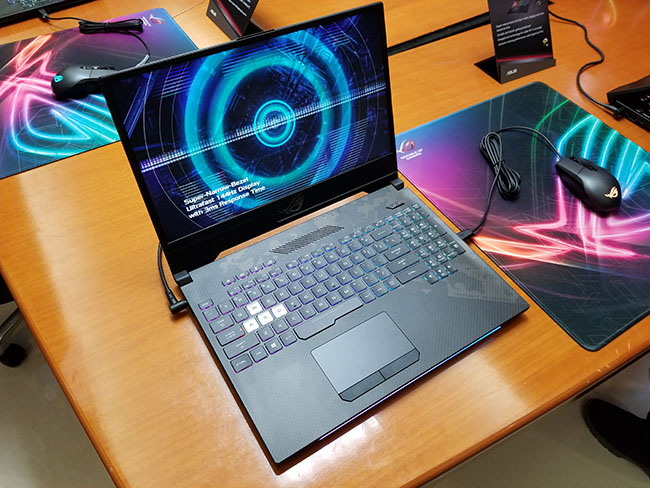Asus Goes All-in with eSports with Strix and Scar II Gaming Laptops
Unless you've been under a rock for the past few years, eSports is a thing. So much so that you've got chairs, headsets and keyboards targeting this increasingly lucrative market. Asus is looking to get in on some of that sweet, sweet action with two new gaming laptops, the ROG Strix (GL504) Hero II and Scar II available now starting at $1,699 and $1,999 respectively.
Focusing on MOBAs (Multiplayer Online Battle Arenas) and FPS (first-person shooter) titles, Asus has fine-tuned both systems (5.3 pounds, 14.2 x 10.3 x 1 inches) to deliver mid-to-high level performance in a relatively portable chassis. In order to differentiate the two systems, Asus gave the Scar II a 3D-textured lid with a camouflage and kevlar design and a decidedly cyberpunk aesthetic for the palm rest while the Strix features a more traditional look. If I had to choose, I'd go with the Scar II for its edgier look.
MORE: Best Gaming Laptops (Including VR-Ready Gaming Laptops)
Asus is going all-in on the narrow bezel craze, shrinking them to barely-there proportions on three sides of both systems. The smaller bezels allow the company to finagle a larger 15.6-inch, 1920 x 1080 display into the 14-inch chassis and offers a deeper level of immersion. Both IPS-type panels offer a 144-Hertz refresh rate with a 3-millisecond response time that will further reduce ghosting and motion blur. The downside of the bezels, I soon discovered, was that the webcam has been displaced to the thicker bottom bezel, to the right of the ROG emblem. It's not ideal for livestreaming, so gamers looking to engage with their Twitch followers
Both the Scar II and the Hero II are equipped with a full-sized keyboard complete with a num pad. Asus claims that consumers can expect 1.8 millimeters of key travel, which is well above our comfort minimum 1.5mm. That should mean a nice, springy experience depending on the amount of actuation force. The company has added its Overstroke technology, which Asus says adjusts the actuation point yielding quicker key inputs.
Typical of more expensive gaming rigs, both the Scar and Hero have customizable backlighting with four lighting zones. Each keyboard features a set of clear keys which correspond to the most popular key setups for each genre. The Hero II highlights the QWER keys for MOBA players while the FPS faithful have translucent WASD keys on the Scar II. Similar to Razer's Synapse software, Asus' Aura Sync software lets you sync up color and effects across compatible devices.
MORE: Here Are the Best Gaming Laptops Under $1,000: Edition
Sign up to receive The Snapshot, a free special dispatch from Laptop Mag, in your inbox.
The starting configurations for both systems offer an 8th Gen Intel six-core Coffee Lake Core i5-8300H processor with up to 32GB of RAM and a 512GB M.2 NVMe PCIe SSD with a 1TB 7,200-rpm hard drive. The biggest fork in the road for the Hero II and the Scar II is the GPU. Focusing of MOBAs, the Hero II only offers a Nvidia GeForce GTX 1060 GPU with 6GB of RAM while the Scar II can be equipped with a GeForce GTX 1070 which makes sense because it's FPS focused.
Since the Hero II and Scar II are relatively slim, overheating is a very real possibility. In order to beat the heat, Asus has deployed its HyperCool System which the company claims will keep important components within reasonable temps without adjusting clock speed or performance. Using heat pipes, the heat is dissipated to radiators on the outer perimeter of the system. Asus has also taken the extra step of adding heat spreaders to the GPU to keep things frosty. The GTX 1070 version of the Scar includes extra heat pipes for the graphics card. Throw in the dual fans with 0.004-inch thick blades for faster fan rotation and you get 10 percent more heat dissipation -- at least according to Asus.
So to recap, Asus has a pair of mid-to-high level gaming laptops on the way, targeting two of the most popular gaming genres in eSports. On paper, both systems look good, but I'm reserving judgment until they come into the lab for testing.

Sherri L. Smith has been cranking out product reviews for Laptopmag.com since 2011. In that time, she's reviewed more than her share of laptops, tablets, smartphones and everything in between. The resident gamer and audio junkie, Sherri was previously a managing editor for Black Web 2.0 and contributed to BET.Com and Popgadget.




